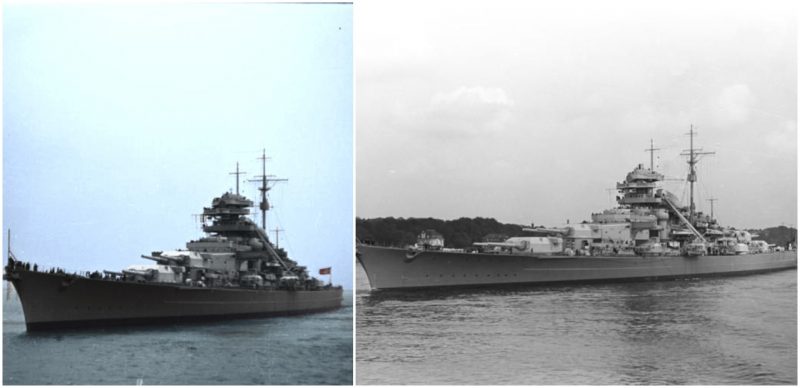Perhaps the most iconic of WWII battleships, the Bismarck truly was the pride of Nazi Germany’s Kriegsmarine when it first set sail in August 1940.
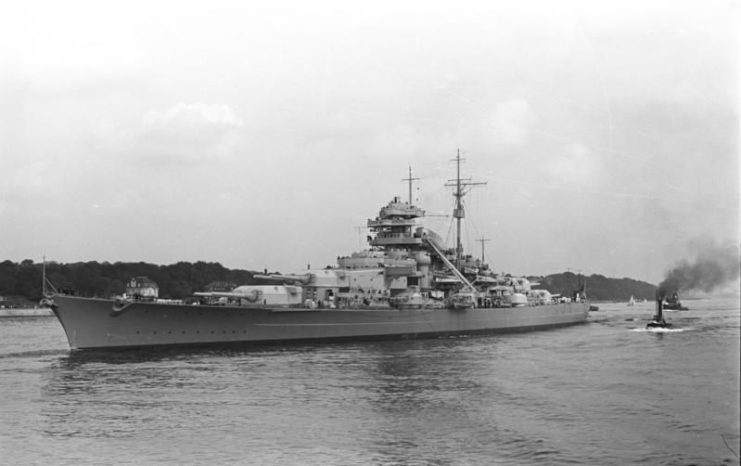
Back then, the Bismarck and its sister ship, the Tirpitz, were two of the largest battleships ever built in Europe. Needless to say, they were also the two largest ships in German history.
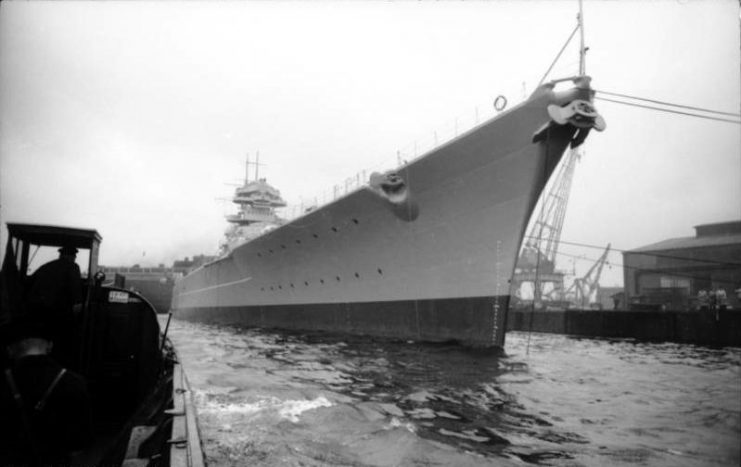
Although it was considered by many to be an indestructible design, ready to tear apart any Allied ship that stood in its way, the Bismarck met a rather tragic end just eight months after it was commissioned.
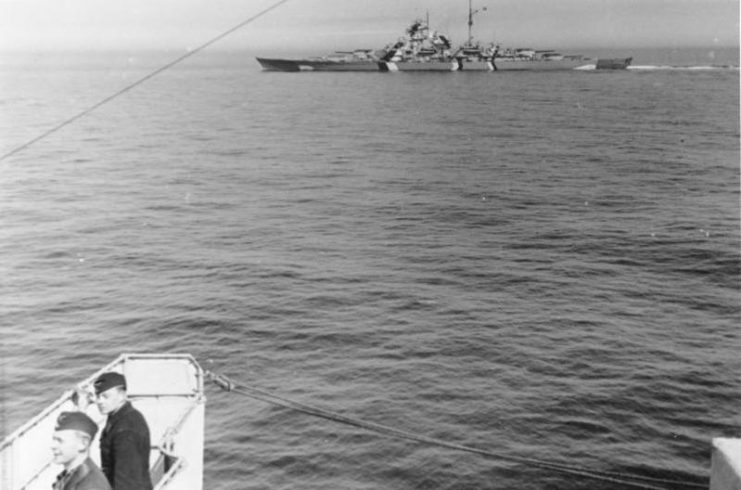
Still, the ship was both feared and respected by the enemy, as it truly was a sea monster destined to become the British Navy’s most precious trophy.
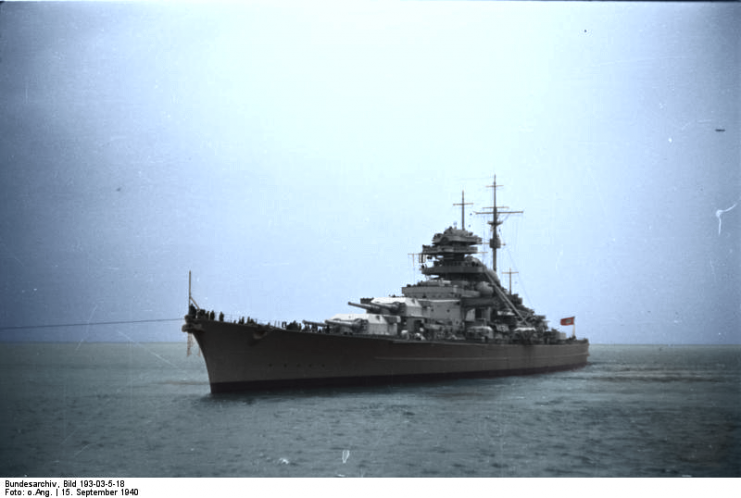
This 250-meters long (823 ft and 6 in) battleship was armed with devastating firepower. Among its most prized possessions were eight 38 cm SK C/34 naval guns, followed by twelve 15 cm medium-caliber canons.
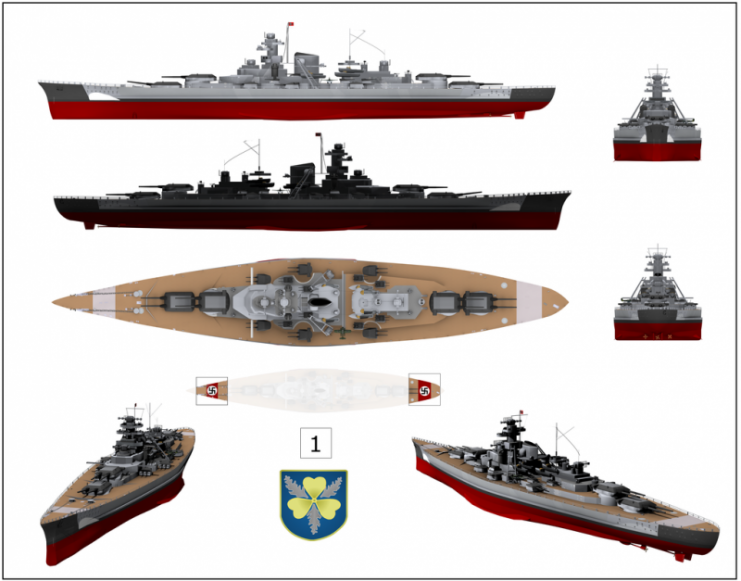
Together with an array of different caliber anti-aircraft guns, the Bismarck was a floating fortress, capable of annihilating enemy ships and airplanes.
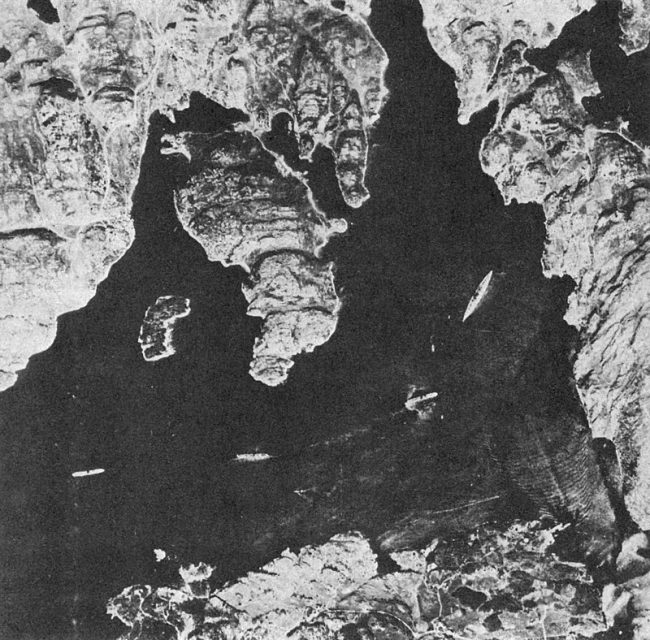
In addition, the ship’s 103-men-strong crew included hydroplane pilots for the four Arado Ar 196 Floatplanes that were also part of its inventory.
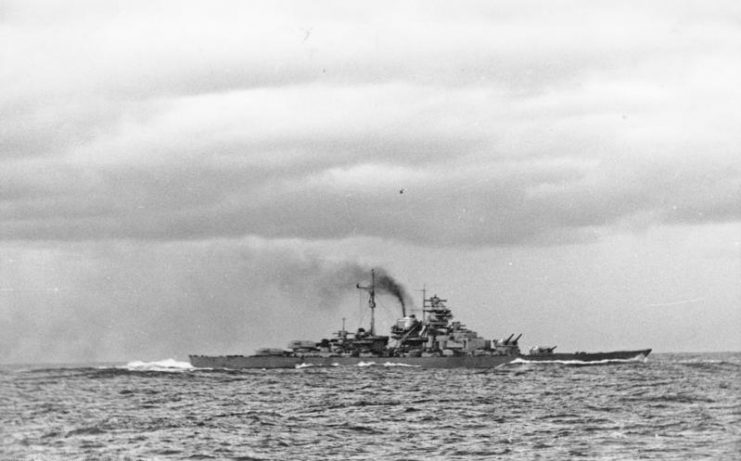
Mit zwei Treffern im Vorschiff verlässt das Schlachtschiff Bismarck den Schauplatz des Seegefechtes unter Island.
Prop.Kp.: MPA Nord Film-Nr.: 100/28
Bildberichter: Lagemann
Wilhelmshaven, Herausgabedatum: Juni 1941
In 1936, it was first laid down in Hamburg, at the Blohm and Voss shipyard. Blohm and Voss were given the task of creating a proper replacement for another sea giant – the pre-Dreadnought SMS Hannover, serving in the Royal German Navy from 1907 to 1918.
Launched in February 1939, the ship received a lavish christening ceremony in which the granddaughter of Chancellor Bismarck himself, Dorothee von Lowenfeld, officially attended, together with Hitler, to christen the ship bearing her grandfather’s name.
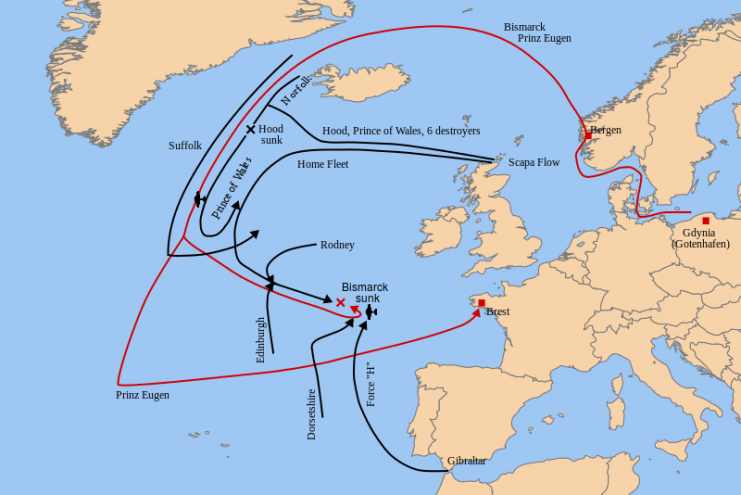
Intended for raiding missions in the Atlantic and the disruption of Allied merchant fleet convoys, the Bismarck’s first departure into battle was closely watched by the very top of the Third Reich’s leadership.
However, its first mission, dubbed as Operation Rheinubung, proved to be an utter failure. In tandem with the Prinz Eugen, an Admiral Hipper-class heavy cruiser, the Bismarck was spotted by the British off the coast of Scandinavia in May 1941.
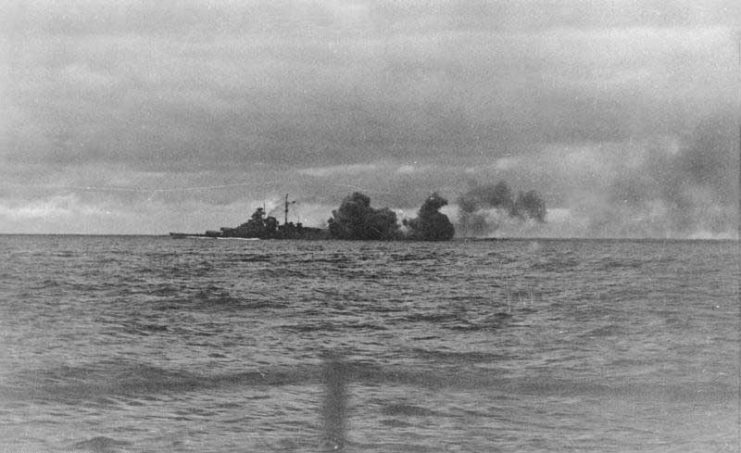
HMS Hood was deployed and engaged the Prinz Eugen but was soon met by the Bismarck. Hood was then joined by HMS Prince of Wales and the naval battle that came to be known as the Battle of the Denmark Strait ensued.
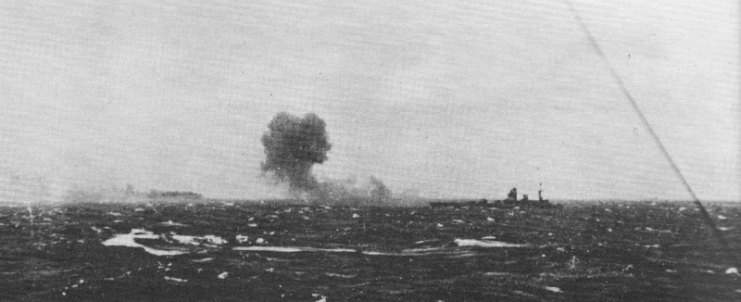
The immediate aftermath of the battle was promising for the Germans – HMS Hood was sunk and the Prince of Wales was damaged and forced to retreat.
But when it became clear to the British that they were dealing with one of the Kriegsmarine’s capital ships, they sent a squadron of 16 torpedo bombers, one of which managed to cripple Bismarck’s steering gear.
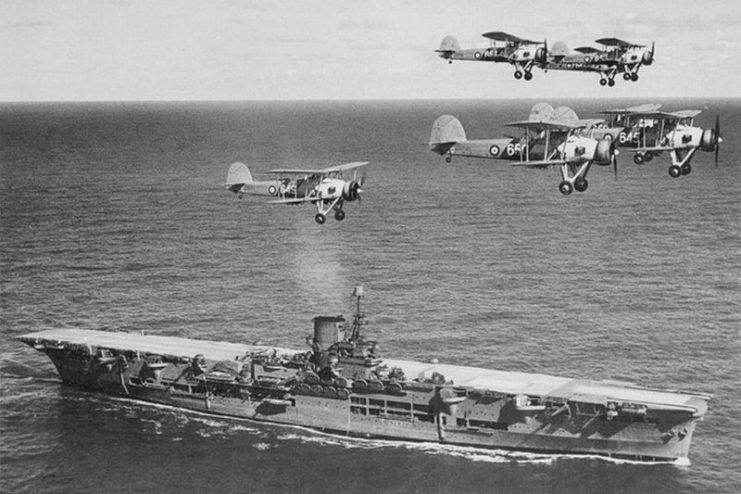
Together with the damage sustained from the previous encounter, Bismarck was inoperable. To make sure that their modern battleship wouldn’t fall in enemy hands, the Germans decided to sink it themselves some 650 km west of the French coastal city of Brest.
It was a blow from which the German Navy of WWII failed to recover.
